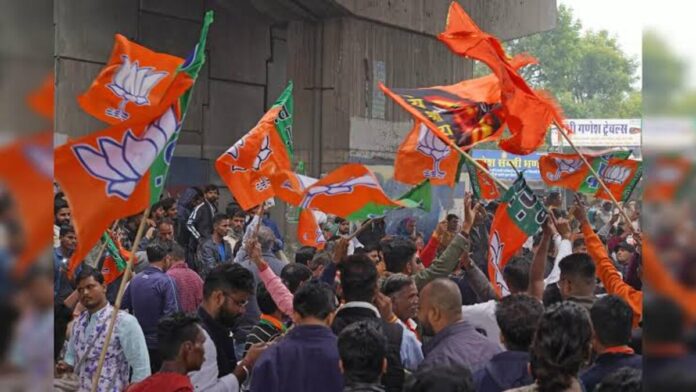As the election dust settles, Bharatiya Janata Party (BJP) strategists are patting themselves on the back for once again putting their successful playbook’s standard operating procedure into practice: fielding a large number of new candidates to assuage voter ire and reduce anti-incumbency sentiment. This was the strategy, implemented to differing degrees in the three Hindi heartland states (Gujarat saw great success with it in 2022), and it appears to have worked.
Consider the 90-seat powerful state of Chhattisgarh, where the BJP was challenging the sitting Congress. Of the 47 new candidates the party nominated, 32 were elected to the legislature, meaning that nearly 60% of the recently elected parliamentarians from the BJP have not had much experience; to be sure, some of them are members of Parliament.
Strategists for Congress proposed a similar course of action. Any government, after all, is bound to encounter some degree of voter ire, with ministers being the most obvious targets. The Congress nominated a few fresh candidates, but all of the current ministers were kept in office despite indications from polls that they were performing poorly. As expected, only three of the twelve current ministers were victorious. Just 26 new candidates were fielded by the ruling party, and 13 of them were successful.
To be sure, there were many other circumstances that contributed to the outcome. Political analyst Sudeep Shrivastava stated, “There are actually three regions in Chhattisgarh, and they all had different reasons for winning.” He does, however, draw attention to the fact that some of the state’s most stunning wins were from newcomers, such as OP Choudhary, a politician who joined the party in 2018 and won by 65,000 votes.
While the BJP used fresh faces to unseat the Congress in Chhattisgarh, the party fielded just 40 new candidates in Madhya Pradesh, a bordering state, for the assembly’s 230 seats. With thirty of them winning, their success rate was extremely high. But 12 of Shivraj Singh Chouhan’s cabinet faced defeat.
“The reason why we didn’t drop the ministers is because Amit Shah ji gave newcomers seats in the initial lists. By the time the fifth list came out, all these ministers and old guard were retained, because the leadership decided that it would totally stem any rebellion or independents,’’ said a former minister who asked not to be named. The Congress, meanwhile, fielded 50 fresh faces, but 42 of them lost — a number that shows that merely fielding fresh faces isn’t adequate.
Rajasthan followed suit with this theme as well. Only nine out of 25 candidates were successful in this case because Chief Minister Ashok Gehlot kept his ministers. Only 43 fresh candidates were fielded by the party for the 199 seats available. Eight of the new faces were successful.
With 39 seats given to freshmen compared to the reigning party, the BJP still had the historical advantage of winning Rajasthan because of anti-incumbency, and 13 of those tickets ended up being successful.
A spokesman for the Congress party claimed that the idea of reducing anti-incumbency through the use of freshmen was “too simplistic.”
In Gujarat, where there are 105 new members in the assembly with 182 seats, the BJP followed the same model. So much so, that chief minister Bhupendra Patel is a relative fresher himself — he entered the Gujarat assembly only in 2017.




